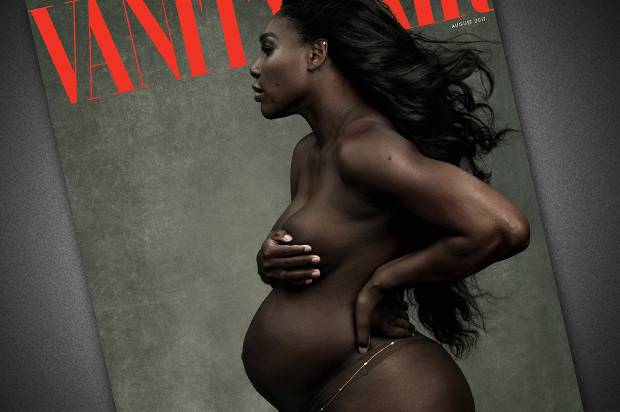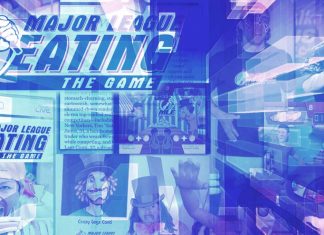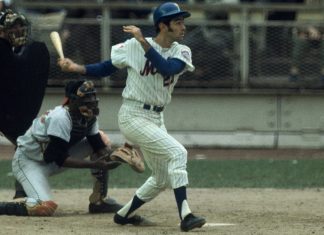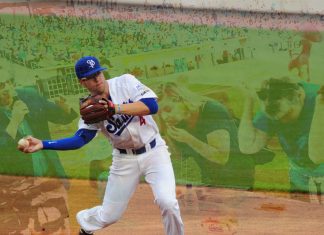Should politics be kept out of the games we love? Should we focus solely on the scores and standings? Should players stick to talking about their athletic pursuits?
These would be interesting questions if they hadn’t already been answered time and again. Sports cannot and should not be held as some sort of realm apart from the political and social context of the rest of the world. Politics touch on nearly every aspect of life. Every element of the game, from where major tournaments are held to how they’re funded to the environments that the athletes participating in them are raised in, are influenced by political decisions. The World Cup has once again proven that this link can’t simply be severed.
The best example of this came during group play when Switzerland faced off against Serbia. Over a century of ethnic and political conflict came to a head during the goal celebrations of Swiss players Granit Xhaka and Xherdan Shaqiri. Both chose to bring their hands together to form the double-headed eagle depicted on the flag of Albania.
This incensed Serbia, including the fans distasteful enough to wear shirts with pictures of convicted Serbian war criminal Ratko Mladic to the game.
Serbian fans in Vienna yesterday chanting, “Knife, Wire, Srebrenica”, a slogan glorifying the genocide of Bosnia Muslims.#WorldCup pic.twitter.com/MPs1vhbaPW
— CJ Werleman (@cjwerleman) June 23, 2018
Xhaka and Shaqiri, as well as Stephen Lichtsteiner, were fined by FIFA after disciplinary hearings for “provoking the general public” but were not served with match bans as the goal celebrations were determined to not be serious enough to merit that more significant punishment.
You probably have a few questions. Like “why were Swiss players flashing a symbol from the Albanian flag?” or “How can FIFA consider a national flag to be a provocation by a player when it uses national flags to identify teams at the World Cup all the time?”
To answer those questions, we’ll have to turn to history, some of it not very recent. During the Ottoman Empire, a great number of ethnic Albanians living in the Balkan region converted to Islam during the 17th century. As the various peoples of the Balkan region began to revolt against the Ottomans as part of broader conflicts like the Russo-Ottoman War, the Albanians tended to fight alongside the Empire. This brought them into conflict with (mostly Christian) Serbs living in the administrative districts, known as sanjaks, of Niş (modern day southern Serbia) and İşkodra (found in modern day Montenegro). Serbian leadership saw the Albanian minorities as a potential vulnerability in a future Serbian state, so in 1877 they ordered the expulsion of Albanians. Tens of thousands of Albanian refugees had to resettle, many in Kosovo. Small scale conflict during the following years, including Albanian reprisals against Kosovar Serbs, added tension to the embittered relations between Albanians and Serbs.
Mounting concern among Albanians about the possibility of becoming divided among the newly independent Balkan states of Serbia, Montenegro, Bulgaria, and Greece led to their declaration of independence from the Ottoman Empire and the foundation of Albania in 1912. The Ottomans were unable to prevent Albania from leaving the Empire, as they were being forced out of the Balkan Peninsula by the other Balkan states. Recognition of Albania’s independence by the Great Powers (Russia, Germany, France, Great Britain, and Austria-Hungary) sealed its new place in the international realm… just in time for the World Wars.
Serbs and Albanians both experienced immense political upheaval during the first half of the 20th century. The formation, fall, and re-formation of governments and states under and after occupation during the global conflicts eventually came to an end with the conclusion of World War II. Both Serbia and Albania were folded into Soviet republics during the Cold War.
Reforms during the 60s in the Soviet Republic of Yugoslavia saw a decline in influence for ethnic Serbs in Kosovo and a commensurate increase for Kosovar Albanians. This stoked Serbian fears of being treated as second-class citizens in Kosovo. In 1989, Serbian politician Slobodan Milošević used these fears to pave the way to greater power among Serbians. The resulting tensions led to the breakup of the Soviet Republic of Yugoslavia, opposed by ethnic Serbs wishing to keep Yugoslavia together. The Yugoslav Wars continued off an on from 1991 to 2001. It was during this string of conflicts that Ratko Mladić (the guy on the t-shirt), a Bosnian Serb, commanded the Siege of Sarajevo. During the siege, Mladić’s forces targeted civilians and murdered 8,300 civilians after overrunning the U.N. safe zone at Srebrenica. Efforts to end the conflict were complicated by the ethnically Albanian Kosovo Liberation Army conducting a guerilla campaign for independence.
The Kosovo War, one of the conflicts making up the larger Yugoslav Wars, lasted from February 1998 to June 1999. In that time thousands of civilians, mostly Kosovar Albanians, were killed and over a million people were displaced. Many refugees settled in nearby states including Switzerland. NATO intervention helped bring this conflict to a close but also resulted in the deaths of 488 civilians. Fighting continued elsewhere in the Balkans for a couple more years. In total, it is estimated 140,000 in total were killed during the Yugoslav Wars. Croatia, Slovenia, Republic of Macedonia, Bosnia and Herzegovina, and the Federal Republic of Yugoslavia (shortly renamed Serbia and Macedonia) were formed. Serbia and Macedonia separated into independent states in 2006. Kosovo, which has an ethnic Albanian majority, declared its independence from Serbia in 2008. While much of the international community has recognized its independence, Serbia still does not.
The term for situations like these is “frozen conflict”. Kosovo and Serbia fundamentally disagree about the status of the former. Armed conflict over the issue has ceased, but no formal resolution has been accepted. Violence could potentially erupt again. Hence the conflict remains but is not currently “hot”.
So how does this all relate back to a football match between Switzerland and Serbia? Well, both Xhaka and Shaqiri are ethnic Albanians. Shaqiri was born in Kosovo but moved to Switzerland in 1992 with his family. Xhaka was born in Switzerland, but his father was a political prisoner in Serbia for over three years before he and Xhaka’s mother moved to Switzerland in 1990. The history of conflict between Albanians and Serbians, some of it quite recent, has directly impacted both of their lives. Neither player would even be living in Switzerland but for that history.
In the aftermath of the match, people from both teams (as well as many third party observers) have commented that the World Cup isn’t the place for politics. To put it plainly, they’re demanding that Xhaka and Shaqiri ignore a conflict that has lasted for over a century, cost hundreds of thousands of lives, and forced their families to flee their homes as refugees for the sake of not upsetting football fans. Herein lies the issue with telling athletes to stick to sports. We’re not simply asking them to remain quiet, we’re demanding that they suppress their own experiences (and often sufferings) to make a game marginally more entertaining for us. We want our athletes to be superheroes, but the silent kind.
Sports Illustrated ran a special titled “The 100 Greatest Moments in Sports History”. Do you know what moments SI rated more important than Michael Phelps setting a new world record for gold medals won in a single Olympics? More memorable than the “Thrilla in Manila”? Greater than the 1958 sudden death overtime NFL championship known as “the Greatest Game”? They picked three sports moments that are unequivocally political in nature and significance.
The first was in 1936, when Jesse Owens thumbed his nose at Hitler and the racist notion of a “superior race” on the way to winning four gold medals. The second came in 1947, when Jackie Robinson struck a blow for desegregation by breaking the MLB’s color barrier. The third was in 1980, when a team of plucky young Americans defeated a hockey juggernaut from the Soviet Union. While the “Miracle on Ice” makes for a good David vs. Goliath story outside of the political landscape in which it took place, it’s real significance is undeniably because of the Cold War. Robinson smashing the color barrier in the MLB is remarkable because the political and social situation in the United States had been preventing black players from playing in the MLB. Owens’ triumph at the 1936 Olympics is undeniably impressive in a vacuum. A single gold medal is a fantastic achievement, but four in a single Games is special even among medal recipients. Yet the real reason Owens’ performance captures the imagination is because it flew in the face of a racist political movement just years before that movement dragged the world into war.
The triumph of Switzerland over Serbia is ultimately a small one in the scheme of things. It most likely won’t even be the most memorable game of the World Cup. Among the likes of the flopping Neymar and penalty scoring Harry Kane, fixating on the goal celebrations of Xhaka or Shaqiri is missing the point if all you care about is watching the beautiful game. If you appreciate the historical and political context behind those celebrations, I think you can agree that the most memorable thing about them was their restraint.
Cultural, historical, social, and political context hold significance for every aspect of daily life for all people, athletes or otherwise. An international event like the World Cup just makes it more apparent. If this realization is unpleasant or uncomfortable, the solution isn’t to stick our heads in the sand or pretend it shouldn’t be happening. It’s to accept reality and find a way to engage in the conversation playing out on and off the field.















